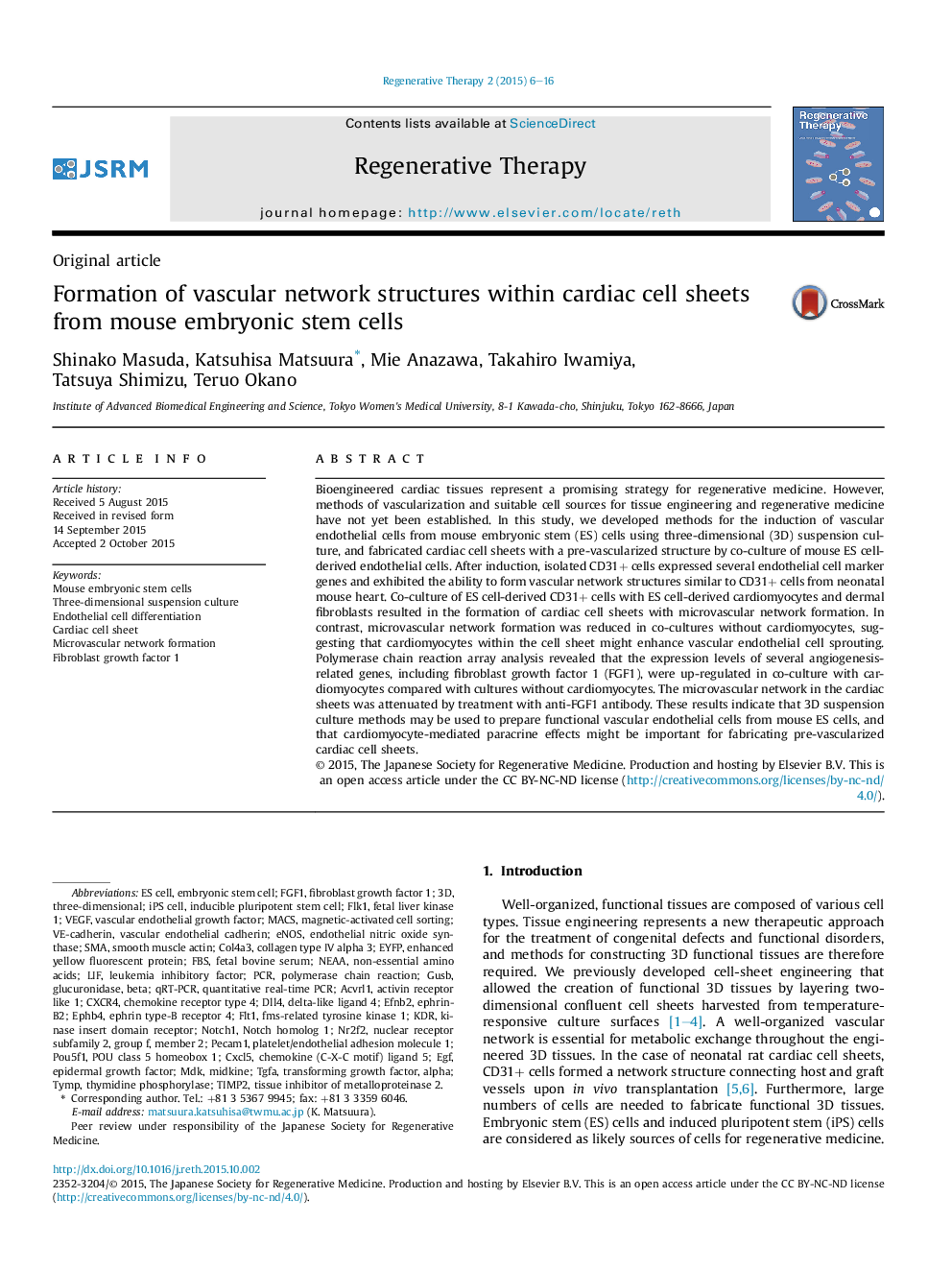| Article ID | Journal | Published Year | Pages | File Type |
|---|---|---|---|---|
| 2022353 | Regenerative Therapy | 2015 | 11 Pages |
•We developed 3D culture to induce vascular endothelial cells from mouse ES cells.•Pre-vascularized cardiac sheets from mouse ES cell-derived cells were prepared.•ES cell-derived cardiomyocytes promote vascular network formation via secreted FGF1.
Bioengineered cardiac tissues represent a promising strategy for regenerative medicine. However, methods of vascularization and suitable cell sources for tissue engineering and regenerative medicine have not yet been established. In this study, we developed methods for the induction of vascular endothelial cells from mouse embryonic stem (ES) cells using three-dimensional (3D) suspension culture, and fabricated cardiac cell sheets with a pre-vascularized structure by co-culture of mouse ES cell-derived endothelial cells. After induction, isolated CD31+ cells expressed several endothelial cell marker genes and exhibited the ability to form vascular network structures similar to CD31+ cells from neonatal mouse heart. Co-culture of ES cell-derived CD31+ cells with ES cell-derived cardiomyocytes and dermal fibroblasts resulted in the formation of cardiac cell sheets with microvascular network formation. In contrast, microvascular network formation was reduced in co-cultures without cardiomyocytes, suggesting that cardiomyocytes within the cell sheet might enhance vascular endothelial cell sprouting. Polymerase chain reaction array analysis revealed that the expression levels of several angiogenesis-related genes, including fibroblast growth factor 1 (FGF1), were up-regulated in co-culture with cardiomyocytes compared with cultures without cardiomyocytes. The microvascular network in the cardiac sheets was attenuated by treatment with anti-FGF1 antibody. These results indicate that 3D suspension culture methods may be used to prepare functional vascular endothelial cells from mouse ES cells, and that cardiomyocyte-mediated paracrine effects might be important for fabricating pre-vascularized cardiac cell sheets.
